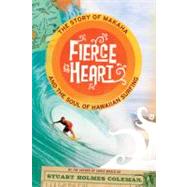
Stuart Holmes Coleman moved to Hawai‘i in 1993 to teach, write, and surf. He is the author of the award-winning book Eddie Would Go and works as the regional coordinator for the Surfrider Foundation. Visit him at www.stuart-coleman.com.
The New copy of this book will include any supplemental materials advertised. Please check the title of the book to determine if it should include any access cards, study guides, lab manuals, CDs, etc.
The Used, Rental and eBook copies of this book are not guaranteed to include any supplemental materials. Typically, only the book itself is included. This is true even if the title states it includes any access cards, study guides, lab manuals, CDs, etc.